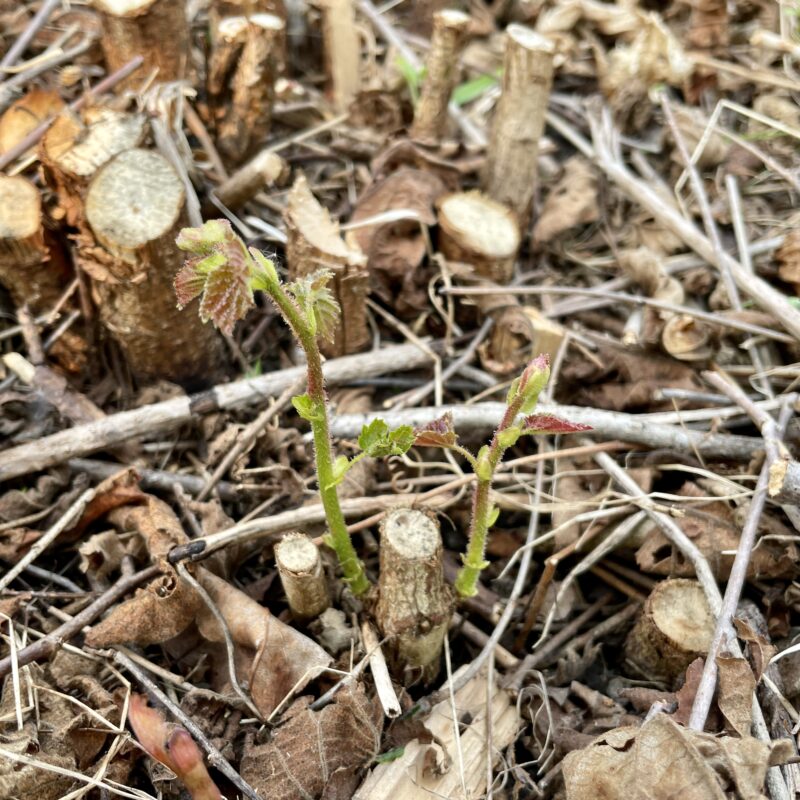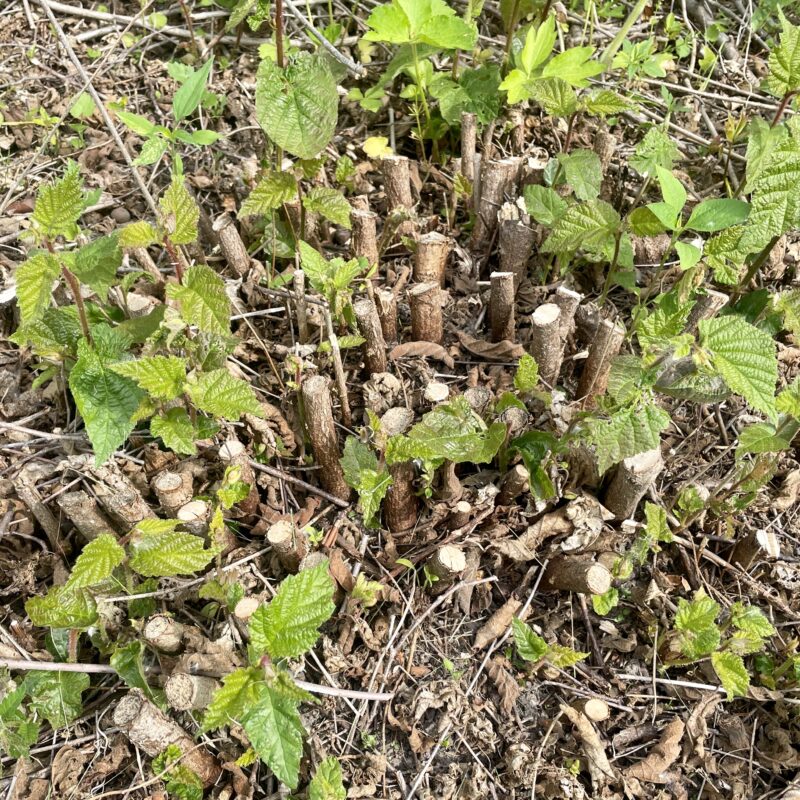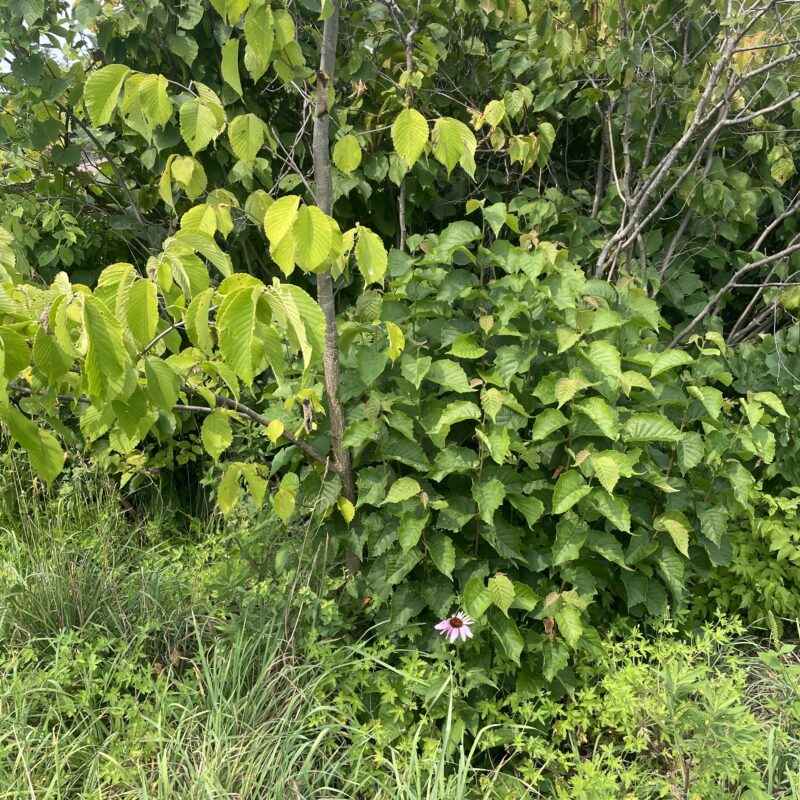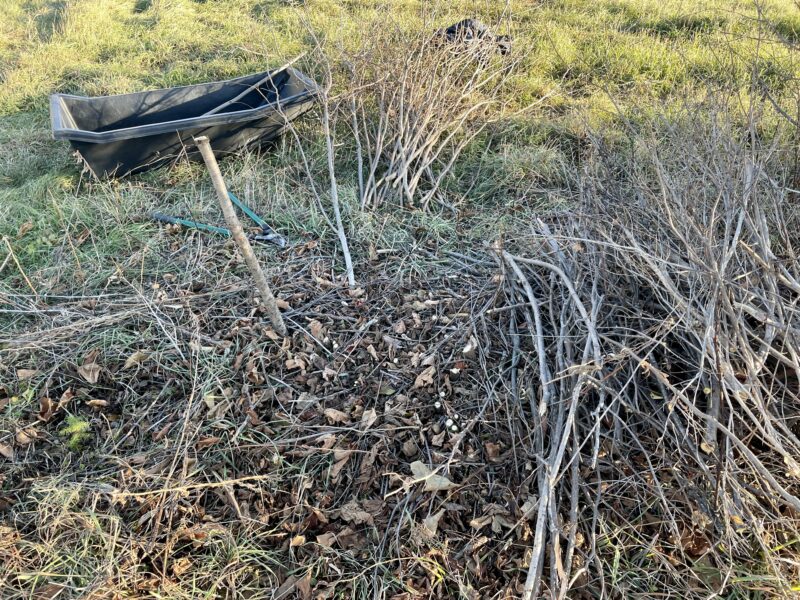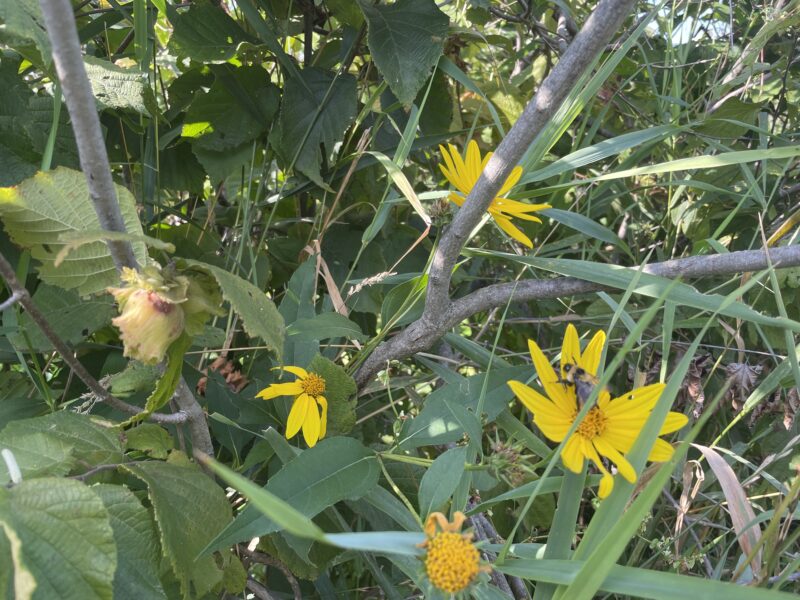
Climate Land Leaders Paul and Sanna Mairet of Nine Hazels Farm grow 12 acres of hybrid hazelnut, a cross between the European hazelnut and the native American species. As a perennial crop, hazelnuts have an extensive root system, which increases water infiltration, soil organic matter and carbon sequestration – and the shrubs provide shelter and nutrition for wildlife. Humans also enjoy the nuts and oil and have a long tradition of creating functional and artistic forms with the wood.

With support from a Minnesota Department of Agriculture Sustainable Agriculture Demonstration Grant, Paul and Sanna are researching coppicing – cutting back the shrub to promote new growth – and the market for the wood harvested in the process.
Says Paul: “According to a limited amount of research, old hazels that aren’t producing many nuts should regrow and resume peak nut production within three years of coppicing. In Europe especially, hazels are coppiced as often as every 7 years because they are focused on harvesting the wood for crafts. We’re working to see if hybrid hazels can be used similarly to European hazel, rejuvenating our grove and creating sustainable crafts through that process.”
Paul shared some successes and challenges from the 2023 season. Here’s his account:
It will be a few years before we see the extent to which coppicing improves hazelnut yields, but the vigorous regrowth (nearly 5 feet in one season!) shows that this practice is beneficial on some level. On average, about half of the stems we removed were dead. These stems were broken up and left to decompose around the base of the plant. The live rods were measured, compared to UK standards for crafting with European hazel, and used to make crafts.
This practice also benefits the ecosystem as a whole. As the hazel canopy is removed and returns over several seasons, this results in varying space and light in the area around the plant, which allows a wider diversity of plants to accompany the hazel. The wider diversity of plants encourages biodiversity in fauna as well. This diversity includes other perennials. To improve the overall genetics present in our hazel grove’s pollen, we could remove hazels that produce smaller and fewer nuts. We were initially wary of the idea of removing perennials from the ecosystem, but if they can naturally be replaced by a diversity of other beneficial perennials, that accomplishes two goals in one activity!
As an example, see the photo with the regrowing hazel with echinacea taking advantage of light access at the base and a young slippery elm waiting to be the main tree in the space if the hazel proves to be a lower performer in terms of nut production. Maybe all of the plants can get along, too – a naturally forming guild of edible and medicinal plants!
